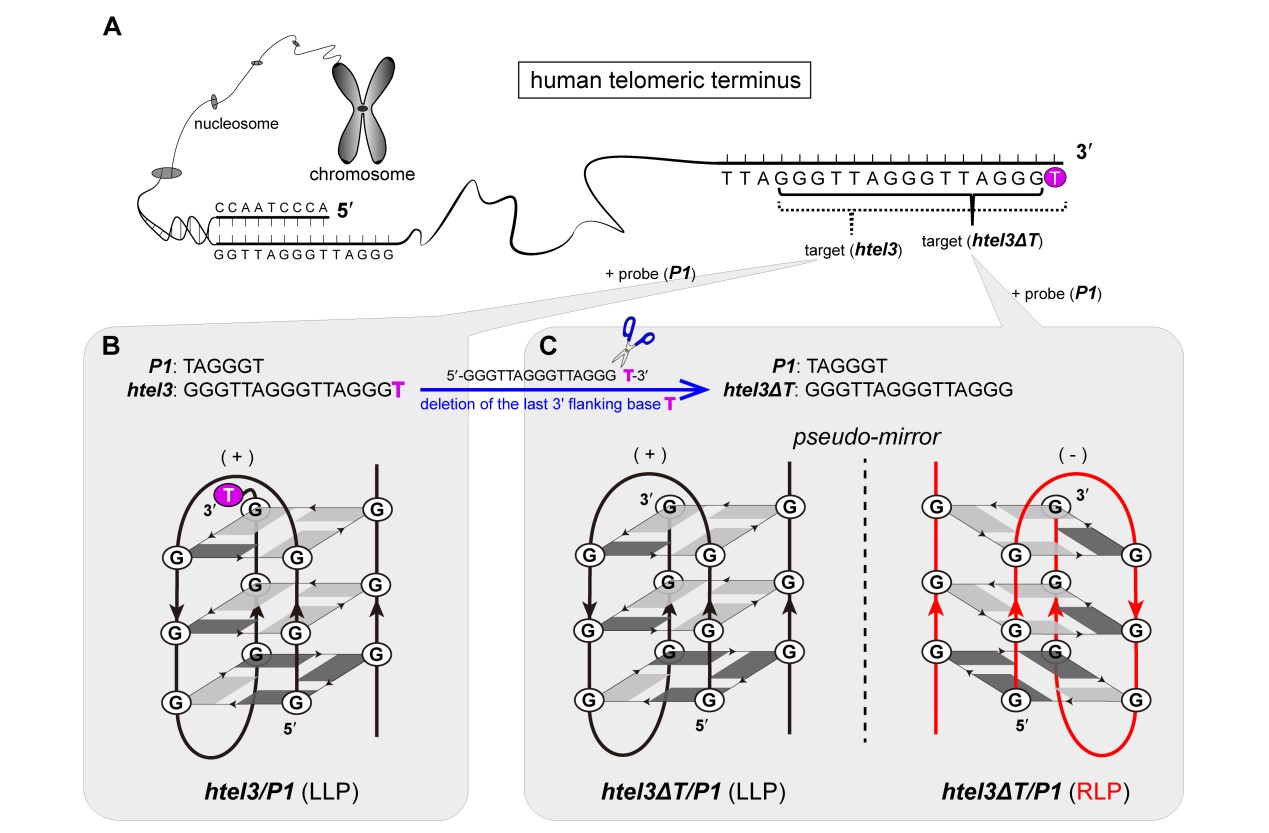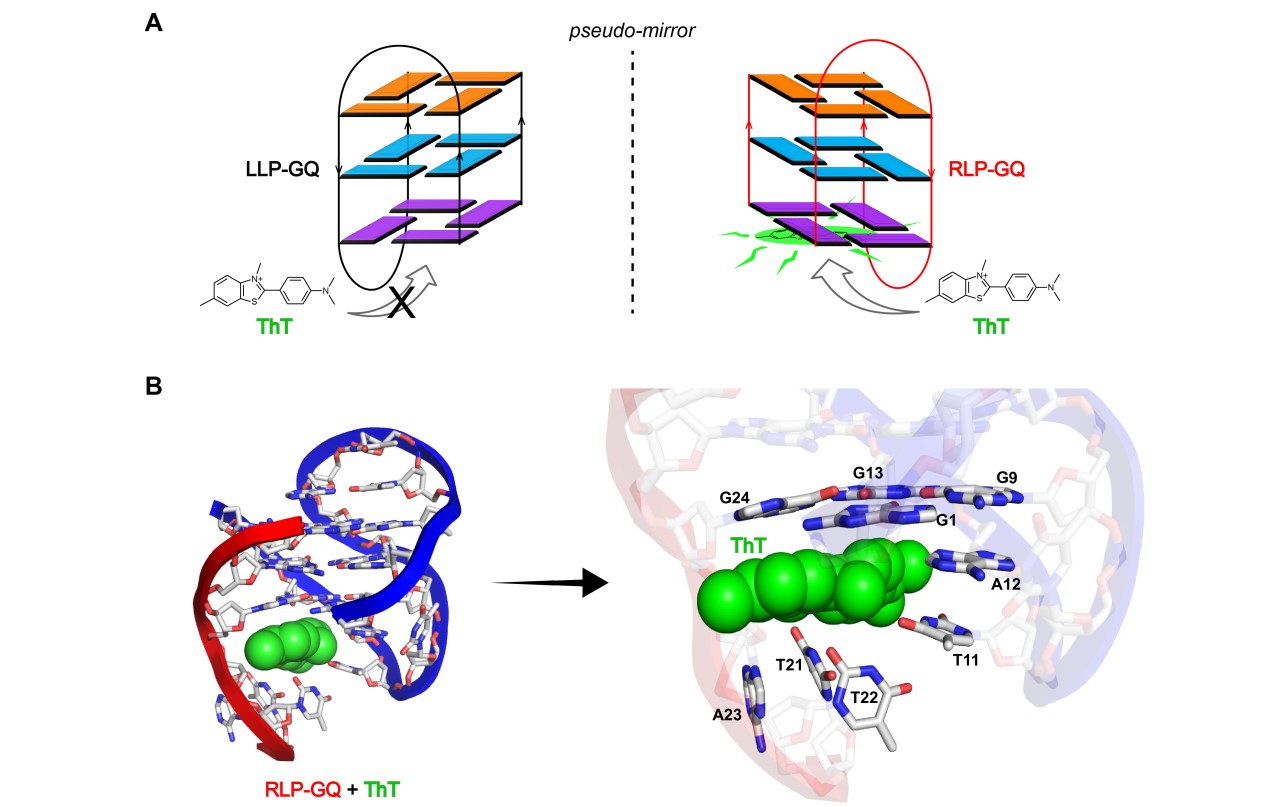
Human telomeric DNA consists of a tandem array of the G-rich repeat unit d(GGGTTA). A four-stranded helical structure adopted by G-rich sequences was named G-quadruplex (GQ) under physiological condition. The final 3'-terminal residue of the telomeric DNA G-overhang is inherently less precise.
As a result, there are a variety of non-G flanking bases at the very 3'-end of telomere. Previously, the role of non-G flanking bases was often overlooked as they were not directly involved in the build-up of the core structure of the G-quadruplex.
A research group from High Magnetic Field Laboratory (HMFL), Chinese Academy of Sciences (CAS) recently reported their new discovery with the help of the solution Nuclear Magnetic Resonance (NMR) technology.
"Our work is the first to describe how an alteration of the last 3'-terminal flanking base affects the mutual recognition between two different G-rich oligomers of human telomeric DNA in the formation of heteromolecular G-quadruplexes," said Professor ZHANG Na, who led the team.
Three repeat fragment d(GGGTTAGGGTTAGGG) was associated with single-repeat fragment d(TAGGGT) to yield two coexisting forms of (3 + 1) hybrid hetero-GQs. In Na+ solution, one hybrid hetero-GQ was named the kinetically favourable LLP-GQ which has left loop progression, the other was named the thermodynamically controlled RLP-GQ which has right loop progression. These two LLP- and RLP-form GQs are seemingly pseudo-mirror symmetric partners, just like our left and right hands.
However, with one single extra 3'-end thymine, the sequences d(GGGTTAGGGTTAGGGT) and d(TAGGGT) could only adopt a single LLP-form in previously report. This is a very good example that such a tiny alteration on flanking nucleotide, even only one single thymine extra or less, has a significant impact on the mutual recognition between two different G-rich oligomers.
To their surprise, although seemingly two pseudo-mirror counter partners, fluorescence dye thioflavin T (ThT) preferentially recognizes RLP hetero-GQ than LLP-form.
This work was supported by National Key Research and Development Program of China and National Natural Science Foundation of China.
Link to the paper: Two coexisting pseudo-mirror heteromolecular telomeric G-quadruplexes in opposite loop progressions differentially recognized by a low equivalent of Thioflavin T

Figure 1. A single alteration of the last 3'- terminal nucleotide flanking to the core segment of G-rich sequence dramatically influences the association between the three-repeat target and the single-repeat probe of human telomeric DNA fragments in the assembly of different (3 + 1) hybrid hetero-GQs. (Image by XU Suping)

Figure 2. Interactions between RLP-GQs and thioflavin T (ThT) (Image by XU Suping)
Contact:
ZHAO Weiwei
Hefei Institutes of Physical Science (http://english.hf.cas.cn/)
Email: annyzhao@ipp.ac.cn